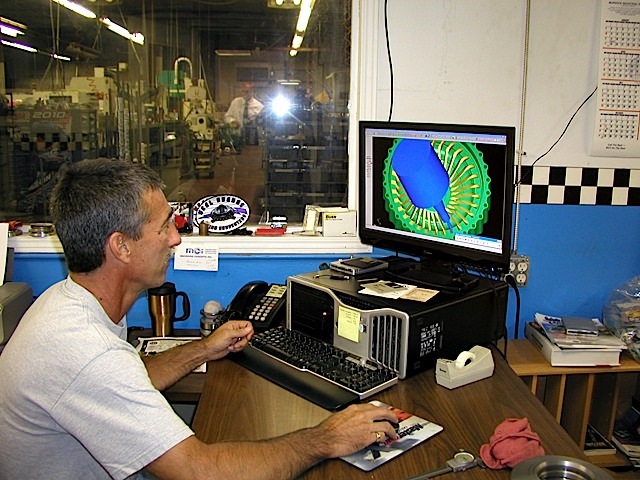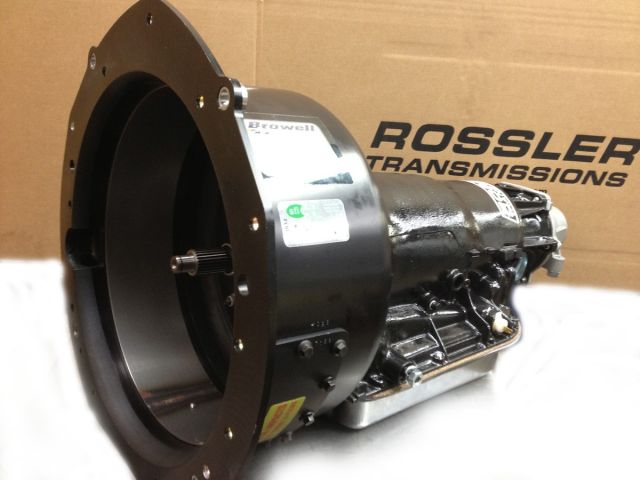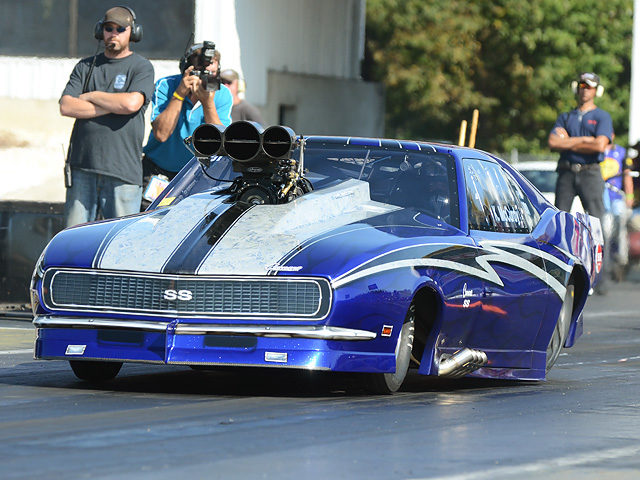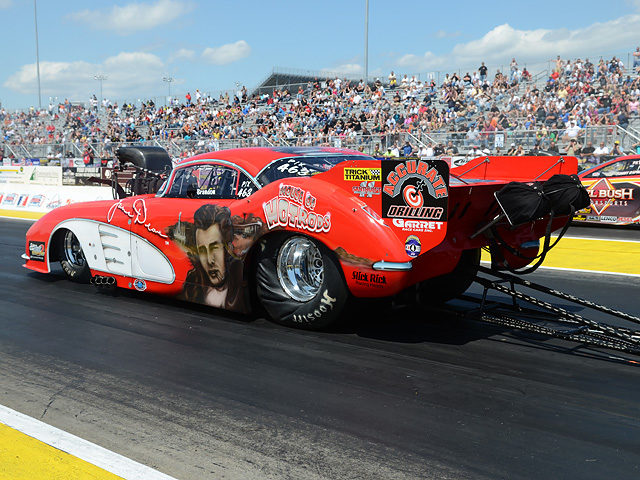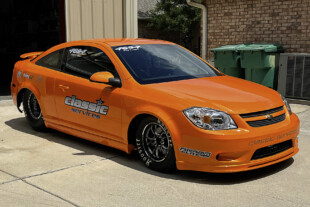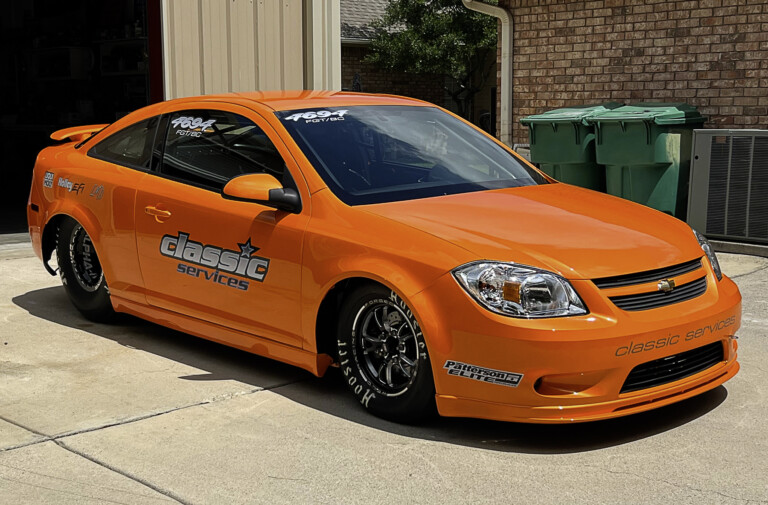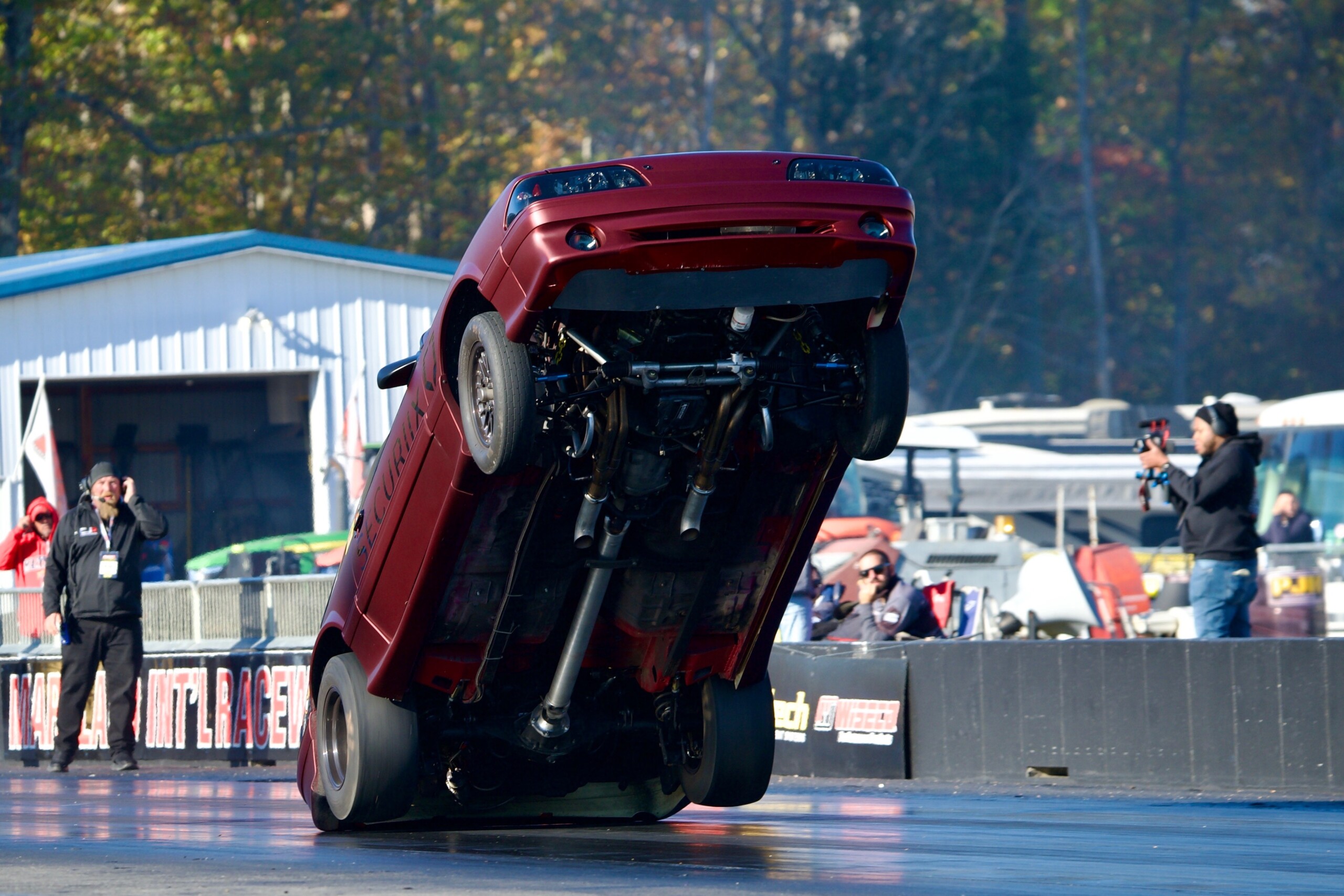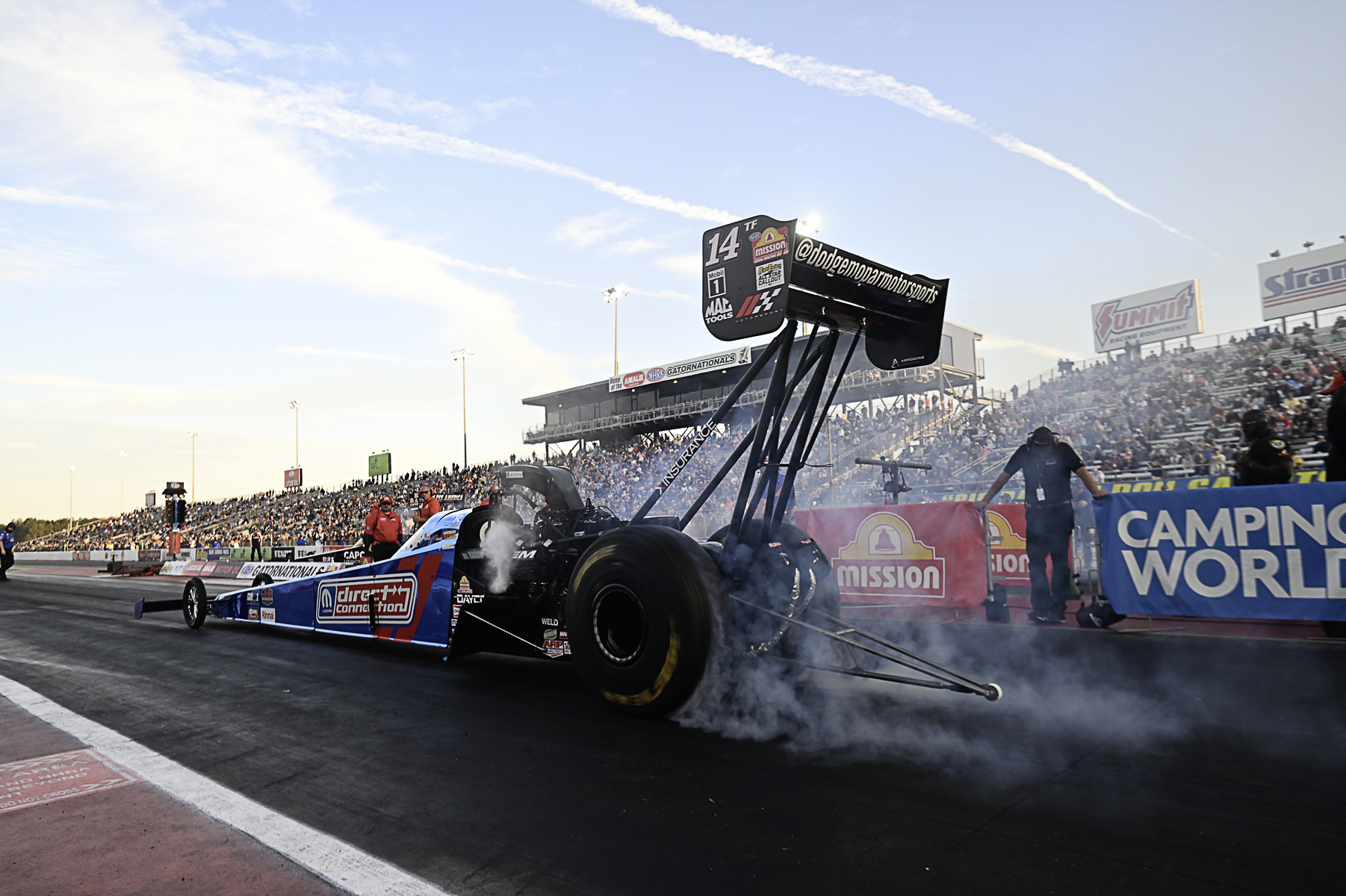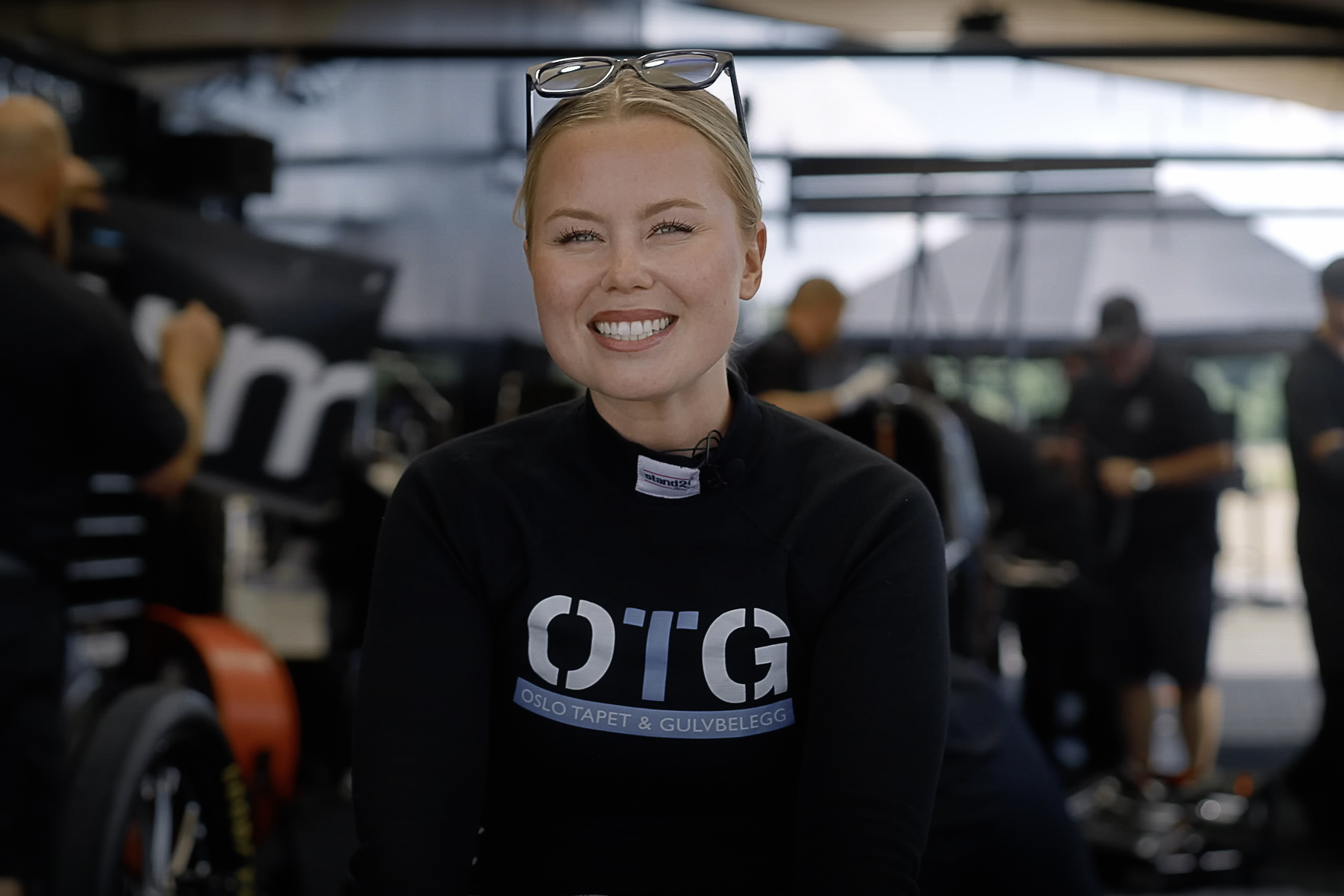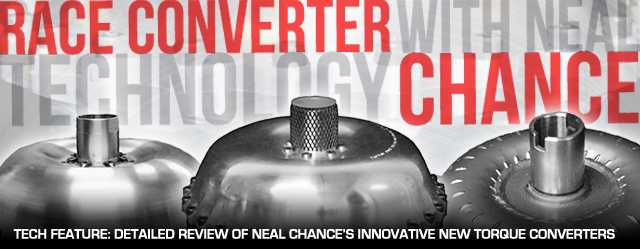
It’s no secret that performance companies release new products almost every year. These new products can range from improvements, revisions, and refinements of existing offerings, all the way up to something that will revolutionize the performance of their customer’s cars. With the constraints of research, development, and testing, as well as marketing of new products, it’s rare that any performance company large or small would release more than one product with sweeping impacts on the sport in a single year.
 However, Neal Chance Racing Converters has done just that. In 2012, after years of extensive research and development, the company released three new converters to their lineup: the Lockup Series, the BB Series, and the NXS.
However, Neal Chance Racing Converters has done just that. In 2012, after years of extensive research and development, the company released three new converters to their lineup: the Lockup Series, the BB Series, and the NXS.
“Typically you don’t launch three major products at once, because each new product you release is like working another full time job,” says Marty Chance. Chance recently sat down with us to discuss in detail each of these three new converters, the engrained technology built into their design, and the advantage these new units offer their customers as they chase records, wins, and championships now and in the future.
Before we dive into these new torque converters, lets take a look at Neal Chance Racing Converters and the story behind the engineering that makes their torque converters perform the way they do.
Experience and Engineering
Typically you don’t launch three major products at once, because each new product you release is like working another full time job. – Marty Chance
Neal Chance Racing Converters is based out of Cheney, Kansas, just a short drive from Witchita, which is home to some of the top aerospace companies in the world. Because of their location, the company has access to a hiring base quite possibly exclusive to any other company in automotive performance.
NCRC has a true in-house engineering department, working with the latest technology and data from their customers to develop and refine their products. “We get a lot of the credit on the phone and at the track from our customers. However it’s our engineering department that does a lot of the hard work. We really do have some of the best engineering minds in the world working for us,” says Chance.
This engineering base combined with the company’s 27-plus years of creating race winning converters, creates a unique product development and innovation program. Chance and his team understand what it takes to tune and win with various racing combinations. This fundamental understanding of the differences between various power adders or naturally aspirated combinations gives them the ability to better tailor each converter for the application.
Now, let’s take a look at each of Neal Chance’s new converters, beginning with the new Lockup Series.
The Lockup Series Converter
Lockup torque converters are nothing new. OEM’s have been installing them for years as a way to improve fuel economy and transmission life. These converters in the past several years have become increasingly popular in the drag racing world as a way of combining the advantages of a dry clutch manual transmission with the torque multiplication of a torque converter.
Typical Lockup Problems of the Past
The new NCRC lockup converter is designed to work with transmissions built by Rossler. The solenoid activated system is incorporated into the valve body of the transmission.
This system is still a trade secret developed by Rossler and NCRC. We can sum it up like this: when activated, the solenoid sends fluid through the input shaft to the converter, hydraulically applying the lock up. The converter can also be unlocked as needed, such as on the shifts or due to changing track conditions.
As Chance explained, “This is vastly different than many of the lockup converters of the past that relied on gas pressure or even OEM type parts to apply the lockup and in most cases the converter could not be unlocked again during a run with those systems.”
Many racing lockup racing converters in the past have relied simply on OEM parts or designs for their systems. Others have used air, or gas pressure as a way to apply the lockup. Chance argues that these methods don’t always translate well to high horsepower, drag racing applications. He states that often the wet lockup clutch will need service or replacement between races. In some cases this means replacing the entire converter since it’s welded together. If enough clutch material comes apart, the transmission too may have to be disassembled to remove all of the contamination. This can make for a long and expensive maintenance or repair period between races.
According to Chance, applying lockup with gas pressure such as compressed air, or nitrous oxide in some cases, may have negative consequences. In these types of applications there is often no way to unlock the converter should the need arise. There’s also the issue of transmission fluid cavitation which occurs from the air pressure being applied. This can lead to problems with the friction surfaces on the wet clutch, and cause problems with the transmission fluid itself, leading to other transmission performance issues.
“Not being able to unlock the converter can also cause traction issues depending on track conditions, such as tire shake or other problems, if lockup is set to occur prior to shifting,” Chance explained to us.” A converter that cannot be unlocked on the track may also have adverse affects on acceleration. Hitting the tires too hard on a shift, blowing them off at the top end, or loading the engine at the wrong time, can in many cases result in lost rounds, destroyed parts or worse — a wrecked race car.”
Neal Chance’s Advanced Lockup Solution
NCRC uses a hydraulic apply system to activate the lockup function. It actually applies the lockup clutch with hydraulic pressure from the transmission. Through the use of an electronically controlled solenoid, the converter can be locked or unlocked on demand.
“The lockup converter is the ultimate — the best of everything in every world. The advantage of a trans-brake launch, the torque multiplication of a converter, and the ability to charge hard on the top end,” explains Chance.

Jim Laurita was one of the first to try the new NCRC Lockup converter in his ADRL Pro Nitrous Camaro.
The lockup clutch is applied using low hydraulic pressure. Due to the design of the lockup piston, though, it actually has very high apply pressure. This means when you want the converter locked, it will stay locked. The hydraulic apply system, however, also ensures that if you need to unlock the converter, on a gear change or due to track conditions, you have that option available.
These converters are constructed from billet aluminum in-house at NCRC. Like all of their racing converters, they are purpose-built for each individual car.
The solenoid operation means that racers could in theory turn on lockup in each gear when conditions are optimum in terms of traction and engine load. They retain the option though to turn it off at the gear change to minimize the “hit” to the tires, or to maintain the correct load for their engine. This also means the converter can be pulsed on and off if the need arises, like pedaling a car at the top end of the track, or during other situations such as poor track conditions.
Track Proven
There wasn’t even a tune up in the car – this thing will go 270 MPH. – Todd Tutterow
These new lockup converters are already making a difference on the track for NCRC’s customers. Jim Laurita’s ADRL Pro Nitrous Camaro was the first car to run the converter this season, which went the entire season without the need for replacing the lockup clutch.
“It’s the biggest, baddest wet clutch you can get,” says Chance, who went on to tell us, “There was only ten-thousandths of an inch of wear on it at the end of the season. If it wasn’t wet, you wouldn’t know it had even been used.” Tight tolerances, quality materials and the best in engineering minimize wear on these converters.
Todd Tutterow, driving Harry Hruska’s Precision Turbo Pro Mod Duster, has already been impressed with the performance of this converter, setting the MPH record for the class the first time out. The car went an astounding 263 MPH, and Tutterow told Chance immediately after the run, “there wasn’t even a tune up in the car, this thing will go 270 mph.”

In his first outing utilizing the new Billet Lockup converter, Todd Tutterow scorched the Englishtown quarter mile at a record 262.49 mph, with an incredible 67.5 mh backhalf split.
BB Series
The BB series converter was designed for racers who compete in classes where lockup converters are not allowed. These converters are also good for racers who don’t have the cash to switch to a full lockup setup, which in many cases may require them to completely switch transmissions.
Lockup-Like Function with Sprags
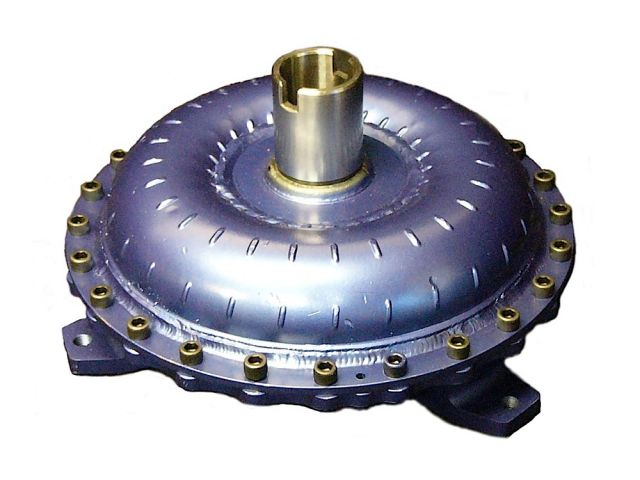
Some existing NCRC converters can have the BB series technology added to them without the need for the customer to purchase a new converter.
These BB Series converters act very much like a lockup, however they are still fully mechanical, allowing them to fit within the rules of classes where a lockup is not allowed. The BB series is still a sprag-type converter, as there is no clutch pack inside, making it legal where a lockup would be banned.
The BB Series converter was specifically designed for nitrous applications, although Chance pointed out to us that the technology is spilling over into the blower and turbo cars as well.
Increased Load at the Right Time
Nitrous and naturally aspirated engines rely on load to help them generate horsepower: too little load and the combination runs rich. In a nitrous application where air/fuel ratios and fuel volumes are often the difference between a win light and melted parts, the role that load plays is absolutely critical. This is perhaps why many in the past have stuck with a manual transmission in a nitrous application, especially in classes where a lockup converter was not allowed.
“This converter has the ability to have a much greater percentage of efficiency than a normal converter would,” said Chance. This converter works using a ten strut mechanical diode designed in-house by the engineers at NCRC. The converter’s locking type features allow for less slippage on each gear change: typically only 10 to 15 percent, and less than six percent at the top of each gear. This is in stark contrast to a typical converter, which could experience slippage of 40 percent or more with each gear change.
In a nitrous engine, where load allows for the engine to make optimal power, this feature helps to produce and maintain higher loads on the engine, according to Chance. That translates into more available power making a pass down the track, and at the same time, more reliability in your race day tune up.
In many cases NCRC can also adapt this technology to your existing NCRC converter, saving you from having to purchase a new one.
NXS Series Converters
The first two innovations we’ve shown you from NCRC are exciting enough. However this third one may turn the automatic transmission racing world on it’s head.
The result of several years of development, the NXS is aimed squarely at the Pro Modified category and the upper echelons of blower car racing. Chance was tight-lipped about all the finer details, and in fact, we can’t even pry an internal or cut away picture out of him for this story. He did however share with us what this converter is all about.

The NXS Series converter is designed with supercharged racers in mind, operating loose out of the gate to get the tires hooked to the race track and becoming progressively tighter as the car accelerates.
The Problem With Converters in Blower Cars
Typically, torque converters are tighter at the launch or after a gear change, and looser at the top end of the track under high-RPM loads, as Chance explained to us. This is actually the polar opposite of what a blower car needs. At the starting line these cars need a converter to be loose with less load on the engine, allowing them to get off the line quicker, make more power, and send it to the tires as traction increases down the track. With a tight converter at the starting line, a blower car may simply shake or annihilate the tires, especially under poor conditions. To compensate for this, many racers may change their gear reduction in the transmission or differential.
Breaking All The Torque Converter Rules
“Until now, there wasn’t a converter available with the ideal technology for a blower car,” states Chance. “Allowing for very little load on the starting line and increasing it with traction is exactly what has been needed.”
The NXS converters, thanks to their technology and design, actually perform ideally for a blower car. They’re loose at the start, allowing the car to be more gentle on the tires (if gentle is a word you can use with cars making this type of power). The converter then helps the car to apply power, getting tighter as it moves down the track. This can allow racers with blown applications to either leave with more power, more gear reduction, or any combination of both.

Marc Meadors set the Nostalgia Pro Mod record, and won the event during his first outing with an NCRC NXS converter.
As a result of these improved launch characteristics, Chance tells us that you can typically expect an NXS converter to improve 60-foot times drastically. We see so many times in this type of racing the difference in the race is the first 60-feet, where tire shake, all-out lack of traction, or other issues can cause a run to be aborted or the performance to be less than stellar. Chance reports that many racers utilizing the new NXS converters are reporting 60-foot times in the 0.8XX range. They also report longer lasting G-loads at the starting line, as well as higher exit speeds from the 60-foot timers.
As the car progresses down the track the lockup function on these converters engages. However, the lockup apply is also not too aggressive, which in a blower car would also be detrimental to the car’s acceleration. The NXS actually gets more efficient toward the top end of each gear.
It allows the tires to be driven harder as the car makes its way down the track, and this top end charge is exactly what blower cars are looking for, making their entire run more efficient.
What may be the most impressive feature though, is how good this converter can perform under poor conditions. Hot tracks, thunderstorms, all manner of weather conditions affect race weekends. The drag racing season, depending on what part of the country you live in, runs the gambit in terms of weather, going from mild, to scorching, to freezing in the course of a season. NCRC’s NXS technology helps racers compensate for poor track conditions. Chance tells us, “Give this converter a 150 degree track temperature and it will go down broadway…bad fast!”
The Proof
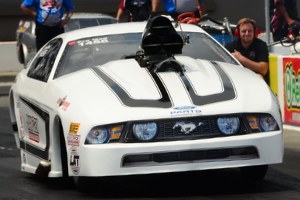
Mike Janis won his class during the ADRL event at zMax Dragway, the first race he'd run with a new NXS converter from NCRC. Janis' car also picked up significant ET.
It’s uncommon in racing at this level to run across a single part that can make a dramatic improvement in a car’s performance. It often takes an exponential effort of horsepower and dollars to pickup as much as hundredths of a second. Chance also told us, “Seldom in your career, or even your lifetime do you run across a product or innovation that you can put in your car, and it will just go faster. That’s what this does.” Stout words indeed, but he has the numbers to back it up.
Nostalgia Pro Mod racer Marc Meadors installed an NXS converter in his supercharged, alcohol-burning Camaro. This car sports a 451 cubic inch HEMI to meet class rules, which is pretty small for a blower car. On his first outing with the new converter, Meadors set the Nostalgia Pro Mod record and won the event, running a career best 5.87 at nearly 250 mph. Mike Janis installed an NXS converter in his Pro Modified Mustang for the ADRL event at zMax Dragway, and he too picked up elapsed time, running a 3.89 and scoring a win that weekend.
Left: Seemingly doomed to wallow in the low six-second zone, Kevin McCurdy switched to the new NXS converter and ran 5.88 on the car's next pass. Right: Uneasy at first about installing a converter that was still in the testing phase, Brandon Pesz was convinced by Marty Chance to try it out. With a NXS converter in place, the car picked up nearly two tenths, and Pesz told Chance he wouldn't be taking it back out of the car.
Still even more impressive are the changes by two more racers. Brandon Pesz’s Pro Extreme ’58 Corvette picked up nearly two tenths of a second by simply changing to the NXS converter. His elapsed times dropped from 3.84 to 3.67 after installing the converter following qualifying at an event. Then there’s Kevin McCurdy, who’s Pro Mod Camaro seemed doomed to wallow in the 6.0’s. The car simply would not make the jump to the five second zone. McCurdy installed a new NCRC NXS converter and the first time out ran a 5.88.
With these exciting products just released this season we look forward to seeing even more NCRC customers breaking records and winning races in 2013. Marty and his engineering team will be hard at work as well focusing on more exciting new developments and breakthroughs in the world of torque converter technology.



